- Choosing the Right Variety
- Climate and Growing Conditions
- Sunlight Exposure
- Growth Habit
- Appearance and Texture
- Availability and Accessibility
- Preparing the Soil
- 1. Clear the Area
- 2. Loosen the Soil
- 3. Remove Debris
- 4. Amend the Soil
- 5. Level the Soil
- 6. Water the Soil
- 7. Test the Soil pH
- 8. Provide Drainage
- Planting and Germination
- 1. Prepare the soil
- 2. Sow the seeds
- 3. Keep the soil moist
- 4. Provide bright, indirect light
- 5. Monitor and maintain soil temperature
- 6. Be patient
- Watering and Maintenance
- 1. Watering:
- 2. Maintenance:
- Dealing with Pests and Diseases
- Pests
- Diseases
- Pruning and Trimming
- 1. Regular Maintenance
- 2. Tidy Up Overgrown Areas
- 3. Pinch Back for Bushier Growth
- 4. Train to Climb or Trail
- 5. Time Your Pruning
- Harvesting and Using Dichondra
- 1. Harvesting the Leaves
- 2. Fresh Consumption
- 3. Drying for Tea
- 4. Ground Cover
- 5. DIY Crafts
- 6. Composting
- Tips for Overwintering
- 1. Bring Indoors
- 2. Reduce Watering
- 3. Provide Proper Humidity
- 4. Maintain Air Circulation
- 5. Monitor for Pests
- 6. Prune and Fertilize
- Questions and Answers:
- How long does it take for dichondra seeds to germinate?
- Can dichondra seeds be sown directly in the garden?
- What is the ideal temperature for germinating dichondra seeds?
- How often should dichondra seeds be watered?
- Can dichondra be grown in containers?
- What type of soil is best for growing dichondra from seed?
- Can dichondra be grown in full sun?
- Videos: How to grow Cucumbers vertically, extremely lots of fruit, Growing cucumbers
If you’re looking to add a touch of elegance and beauty to your garden, consider planting dichondra. This low-growing perennial plant features stunning silver-green leaves that will instantly catch your eye. And the best part? It’s easy to grow from seed!
Here are some tips to help you successfully grow dichondra from seed in your garden:
Choose the right time: The best time to sow dichondra seeds is in the early spring when the soil temperature is consistently above 60 degrees Fahrenheit. This will give the seeds the ideal conditions for germination. You can also sow them in the late summer for fall planting.
Prepare the soil: Dichondra prefers well-draining soil, so make sure your garden bed is prepared accordingly. Remove any weeds or debris from the area, and amend the soil with organic matter to improve its fertility and drainage.
Sow the seeds: Sowing dichondra seeds is easy. Spread the seeds evenly over the prepared soil, and lightly press them into the surface. Make sure not to bury them too deep, as they need light to germinate. Water the area gently to settle the seeds into the soil.
Provide proper care: Once the seeds have been sown, it’s important to provide them with the proper care. Keep the soil consistently moist, but not waterlogged, until the seeds have germinated. After that, water the plants deeply once a week, allowing the top inch of soil to dry out between watering.
TIP: Dichondra is a low-maintenance plant, but it does appreciate some fertilization. Apply a balanced fertilizer every six weeks during the growing season to keep the plants healthy and vibrant.
Protect from pests: Like any other plant, dichondra can be susceptible to pests. Keep an eye out for slugs, snails, and aphids, which can cause damage to the leaves. You can use organic pest control methods or handpick the pests to keep them under control.
Enjoy the beauty: With proper care and attention, your dichondra plants will thrive and provide you with a stunning groundcover or border in your garden. Admire the silver-green leaves and the delicate beauty they add to your outdoor space.”
By following these tips, you can successfully grow dichondra from seed in your garden and enjoy its beauty for years to come. Whether you’re a seasoned gardener or just starting out, dichondra is a fantastic choice for adding elegance and beauty to your outdoor space.
Choosing the Right Variety
When it comes to choosing the right variety of dichondra for your garden, there are a few factors to consider. Here are some tips to help you make the best choice:
Climate and Growing Conditions
Dichondra varieties have different temperature and moisture requirements. Some varieties are more heat-tolerant, while others can withstand cooler temperatures. Consider the climate of your region and the specific growing conditions of your garden when selecting a variety.
Sunlight Exposure
Dichondra can thrive in both full sun and shade, but some varieties prefer one over the other. If your garden receives a lot of direct sunlight, choose a variety that is known for its sun tolerance. If your garden is mostly shaded, opt for a variety that can handle lower light conditions.
Growth Habit
Dichondra varieties can have different growth habits, such as spreading or trailing. Consider how you want the dichondra to fill in your garden and choose a variety that matches your desired look.
Appearance and Texture
Dichondra varieties can vary in leaf shape, size, and color. Some have rounded leaves, while others have more elongated or lobed leaves. Choose a variety that appeals to you aesthetically and blends well with the other plants in your garden.
Availability and Accessibility
Check the availability and accessibility of dichondra varieties in your area. Some varieties may be more readily available at local nurseries or online stores, while others may be harder to find. Consider the ease of obtaining the variety you are interested in.
- Research the climate and growing conditions suitable for dichondra varieties.
- Determine the sunlight exposure in your garden.
- Consider the growth habit you prefer for your garden.
- Choose the appearance and texture that fits your aesthetic.
- Check the availability of dichondra varieties in your area.
Preparing the Soil
Before planting dichondra seeds in your garden, it is important to prepare the soil properly to provide the best growing conditions for the plants.
1. Clear the Area
Start by clearing the area where you plan to grow dichondra. Remove any existing vegetation, such as grass or weeds, to create a clean slate for your new plants.
2. Loosen the Soil
Next, use a garden fork or a tiller to loosen the soil. This will help improve drainage and allow the roots of the dichondra plants to penetrate the soil more easily.
3. Remove Debris
While loosening the soil, be sure to remove any rocks, sticks, or other debris that may hinder the growth of the dichondra plants.
4. Amend the Soil
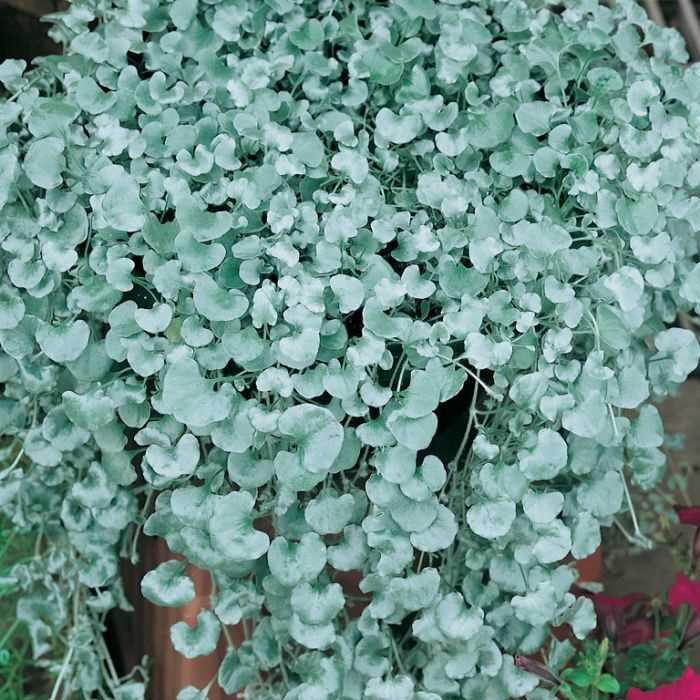
Depending on the quality of your soil, you may need to amend it with organic matter, such as compost or well-rotted manure. This will help improve the soil structure and provide essential nutrients for the plants.
5. Level the Soil
After amending the soil, use a rake to level the surface. This will provide a smooth and even planting bed for the dichondra seeds.
6. Water the Soil
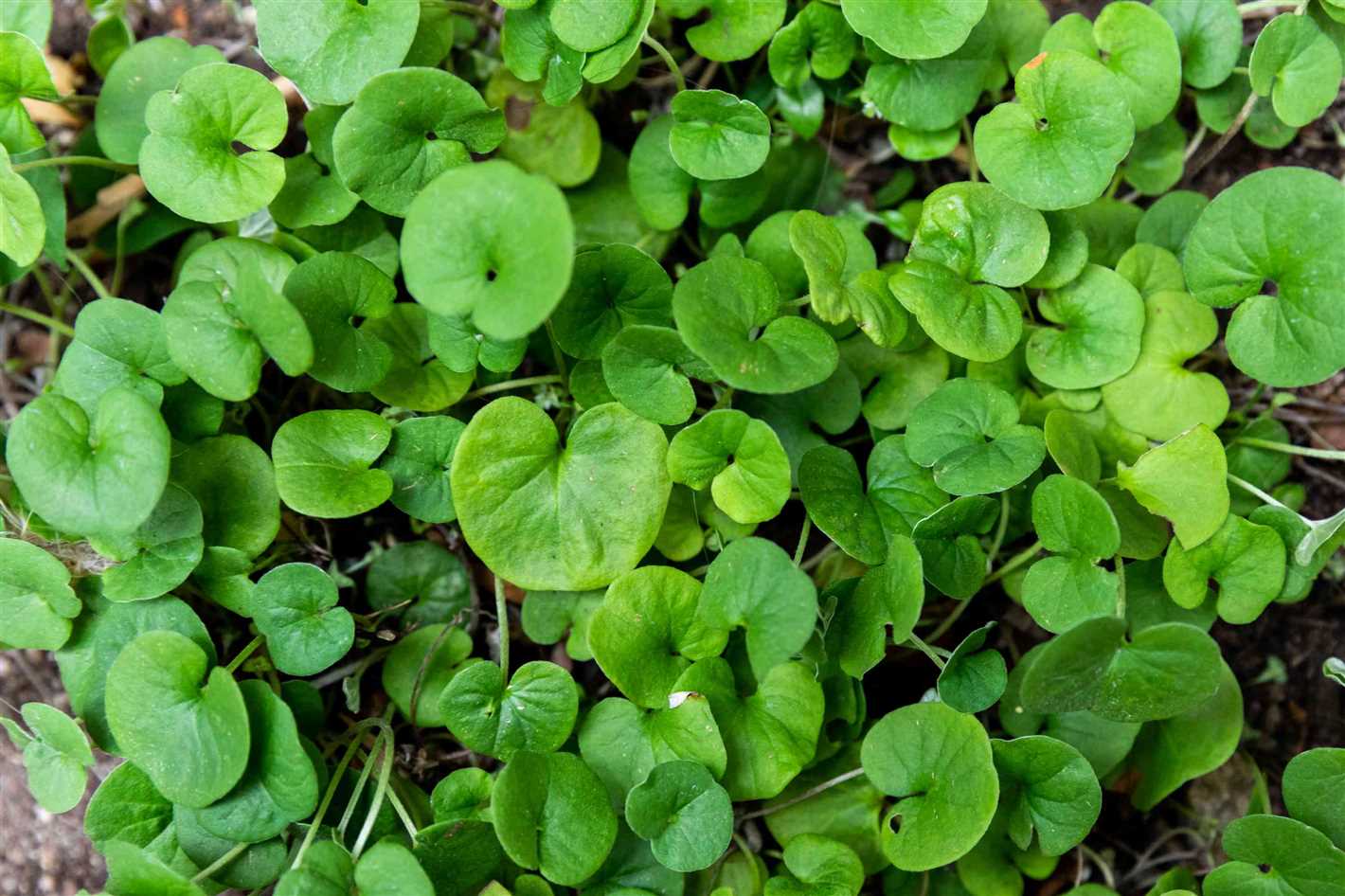
Before planting the dichondra seeds, water the soil thoroughly. This will help settle the soil and provide moisture for the seeds to germinate.
7. Test the Soil pH
Consider testing the pH level of your soil to ensure it falls within the optimal range for dichondra growth. A pH level between 5.5 and 7.0 is generally recommended for this plant.
8. Provide Drainage
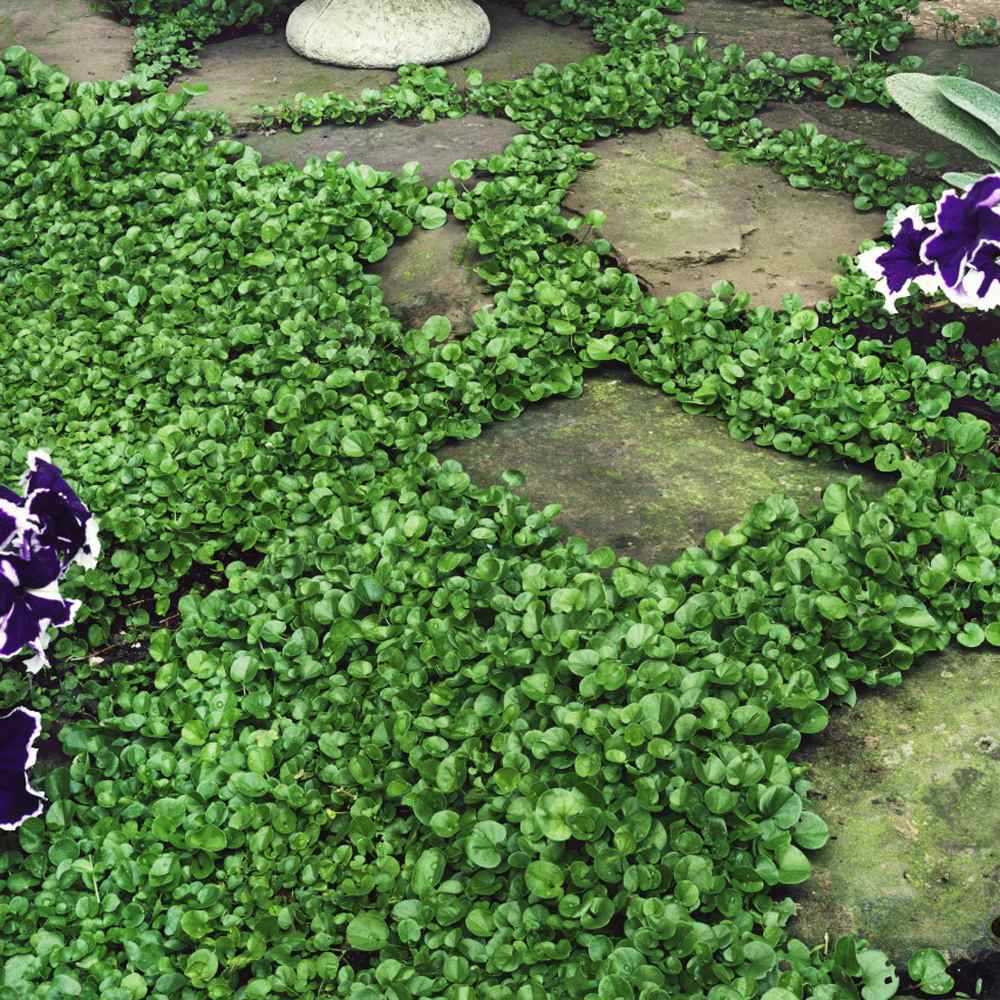
Ensure that the planting area has good drainage to prevent waterlogging. If the soil tends to hold water, you can incorporate organic matter or create raised beds to improve drainage.
By following these steps to prepare the soil, you will create an ideal environment for growing dichondra from seed in your garden. This will give your plants the best chance of thriving and producing lush, green ground cover.
Planting and Germination
When it comes to planting dichondra from seed, there are a few important steps to follow to increase the likelihood of successful germination. Here are some tips to help you get started:
1. Prepare the soil
Before planting dichondra seeds, it’s important to prepare the soil. Make sure the soil is well-draining, as dichondra prefers slightly moist conditions but does not tolerate waterlogged soil. Remove any weeds or debris from the area where you plan to sow the seeds.
2. Sow the seeds
Spread the dichondra seeds evenly over the prepared soil. It’s generally recommended to sow the seeds at a rate of about 1-2 seeds per square inch. Gently press the seeds into the soil, but do not cover them completely as they need light to germinate.
3. Keep the soil moist
Dichondra seeds require consistent moisture to germinate successfully. After sowing the seeds, water the area gently to moisten the soil. Be careful not to overwater, as this can lead to rotting. In dry or hot weather, you may need to water more frequently to keep the soil consistently moist.
4. Provide bright, indirect light
Dichondra seeds need light to germinate, but direct sunlight can be too harsh. Place the planted area in a spot that receives bright, indirect light to encourage germination. A semi-shaded area or a location with filtered sunlight is ideal.
5. Monitor and maintain soil temperature
It’s important to keep the soil at an appropriate temperature for germination. Dichondra typically germinates best when the soil temperature is between 70-75°F (21-24°C). Use a soil thermometer to monitor the temperature and make any necessary adjustments to ensure optimal conditions.
6. Be patient
Germination can take some time, usually ranging from 7-21 days. Be patient and continue to provide the necessary conditions for germination. Avoid disturbing the planting area during this time to prevent damaging the delicate seedlings.
By following these planting and germination tips, you can increase the chances of successfully growing dichondra from seed in your garden. Remember to continue providing proper care and maintenance once the seeds have germinated to ensure healthy growth and development.
Watering and Maintenance
Proper watering and maintenance are essential for the successful growth of Dichondra from seed in your garden. Follow these tips to ensure your plants thrive:
1. Watering:
- Water the seedlings regularly, especially during dry spells or hot weather.
- Avoid over-watering, as Dichondra prefers moist but not soggy soil.
- Water deeply to encourage the plant’s roots to grow deeper.
- Check the moisture level of the soil regularly by inserting your finger into the soil. If it feels dry at a depth of 1 to 2 inches, it’s time to water.
- Consider using a drip irrigation system or a soaker hose to provide a consistent and even water supply.
2. Maintenance:
- Regularly remove any weeds that may compete with the Dichondra for nutrients and water.
- Apply a layer of organic mulch, such as wood chips or straw, around the plants to help conserve moisture and suppress weed growth.
- Prune or trim the Dichondra plants as needed to maintain the desired shape and size.
- Watch out for common pests, such as aphids or slugs, and take appropriate measures to control them.
- Fertilize the plants with a balanced slow-release fertilizer according to the package instructions.
- Monitor the health of the plants regularly and address any issues promptly, such as yellowing leaves or signs of disease.
By providing proper watering and maintenance, you can ensure that your Dichondra plants from seed will grow strong and healthy, creating a beautiful and lush ground cover in your garden.
Dealing with Pests and Diseases
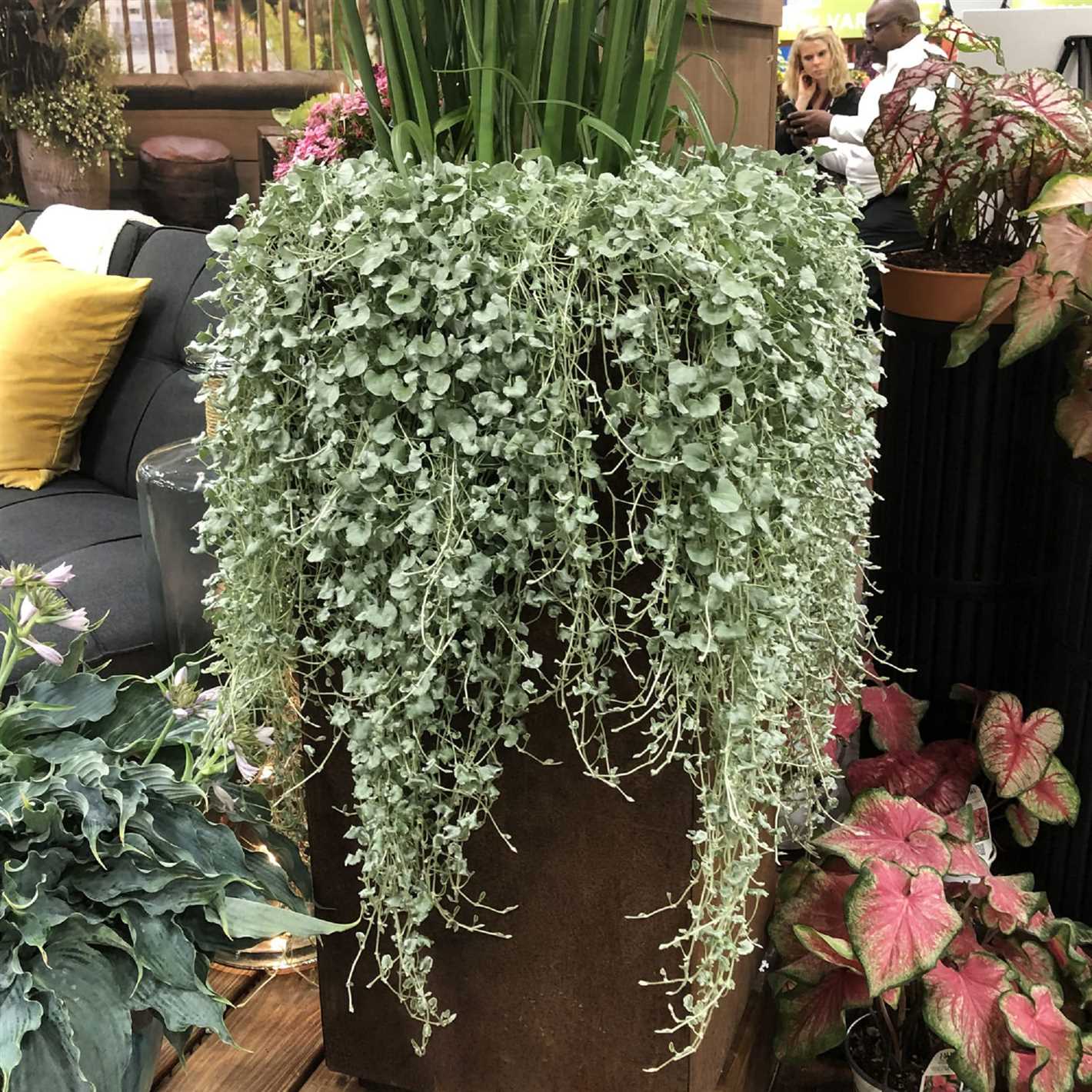
Pests and diseases can pose a challenge when growing dichondra from seed. However, with proper care and attention, you can minimize the damage and keep your plants healthy. Here are some common pests and diseases to watch out for:
Pests
- Aphids: These tiny insects feed on the sap of the plant and can cause stunted growth and yellowing leaves. Use insecticidal soap or neem oil to control aphids.
- Snails and slugs: These slimy creatures feed on young seedlings and can cause severe damage. Use organic slug and snail baits, or set up beer traps to control them.
- Caterpillars: Caterpillars can chew through leaves and stems, causing significant damage. Handpick them off your plants or use a biological control such as Bacillus thuringiensis (BT) to control them.
Diseases
- Fungal diseases: Damping-off, leaf spots, and powdery mildew are common fungal diseases that can affect dichondra. Ensure proper air circulation around plants, avoid overwatering, and apply fungicides if necessary.
- Root rot: Overwatering and poor drainage can lead to root rot, causing the plants to wilt and die. Make sure the soil is well-draining and water the plants only when the top inch of soil is dry.
- Viral diseases: Viral diseases can cause yellowing, stunted growth, and distorted leaves. Unfortunately, there is no cure for viral diseases. Remove and destroy infected plants to prevent the spread of the virus.
Regularly inspect your dichondra plants for any signs of pests or diseases. Early detection is crucial for effective control. Implement good gardening practices, such as proper watering, adequate fertilization, and regular maintenance, to keep your plants strong and healthy.
Pruning and Trimming
Pruning and trimming dichondra plants is an essential part of their care routine. It helps to maintain their shape, promote healthy growth, and prevent diseases. Here are some tips on pruning and trimming your dichondra plants:
1. Regular Maintenance
Regularly inspect your dichondra plants for any dead, damaged, or diseased foliage. Remove these leaves and stems promptly to prevent the spread of diseases and improve airflow to the plant.
2. Tidy Up Overgrown Areas
If your dichondra plants have become overgrown or are encroaching on other plants in your garden, trim them back to maintain a neat and tidy appearance. Use pruning shears or scissors to carefully trim away the excess growth, ensuring not to remove too much foliage at once.
3. Pinch Back for Bushier Growth
Pinching back the tips of the dichondra plants can promote bushier growth. Use your fingers or sharp pruning shears to remove the top two or three pairs of leaves from each stem. This will encourage the plant to branch out and create a fuller appearance.
4. Train to Climb or Trail
If you are growing trailing or climbing dichondra varieties, you can train them to grow in a specific direction. Use plant ties or garden twine to gently guide the stems along trellises, fences, or other support structures. Prune back any stems that stray too far from the desired path.
5. Time Your Pruning
It is generally best to prune and trim dichondra plants in the early spring or late summer when they are actively growing. Avoid pruning during the hottest parts of the day to prevent stress to the plant. Always make clean cuts with sharp tools to minimize damage and promote faster healing.
By following these pruning and trimming tips, you can ensure that your dichondra plants stay healthy, attractive, and well-maintained.
Harvesting and Using Dichondra
Once your dichondra plants have reached their full growth, you can start harvesting and using them in various ways. Here are some tips on how to harvest and utilize dichondra:
1. Harvesting the Leaves

To harvest the leaves of dichondra, simply use a pair of clean gardening shears or scissors to cut the leaves close to the base of the plant. Avoid removing more than a third of the plant’s leaves at a time, as this can stunt its growth.
2. Fresh Consumption
Dichondra leaves can be consumed fresh in salads, sandwiches, or used as a garnish for various dishes. Their delicate texture and mild flavor make them a great addition to many recipes.
3. Drying for Tea
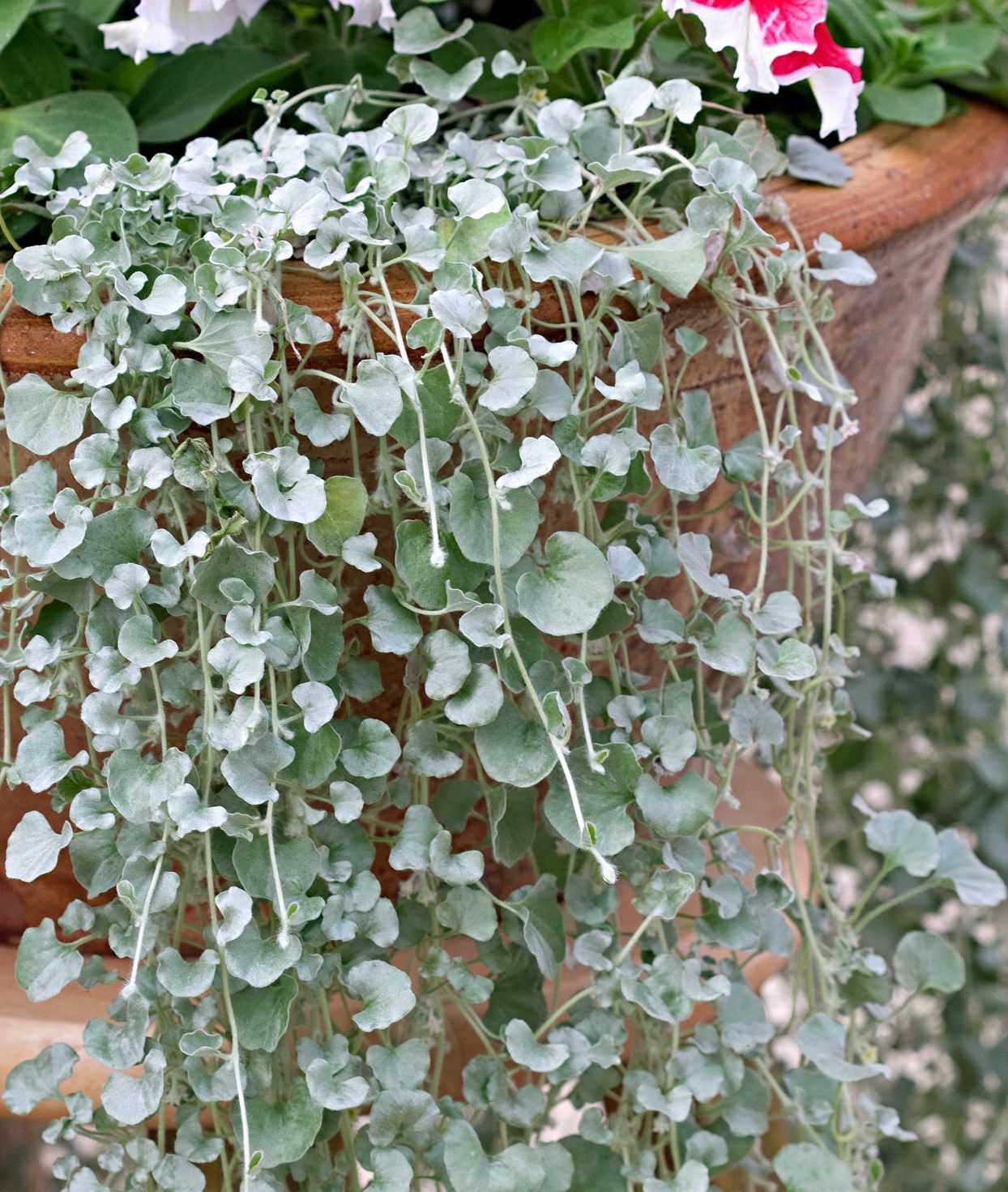
If you have a large quantity of dichondra leaves, you can dry them to make tea. To do this, spread the leaves out on a clean surface and let them air dry for several days. Once completely dry, store them in an airtight container and they can be steeped in hot water to make a refreshing and caffeine-free tea.
4. Ground Cover
Dichondra can also be used as a ground cover in your garden. Its low growing habit and dense foliage make it ideal for filling in gaps between other plants or as a border plant.
5. DIY Crafts
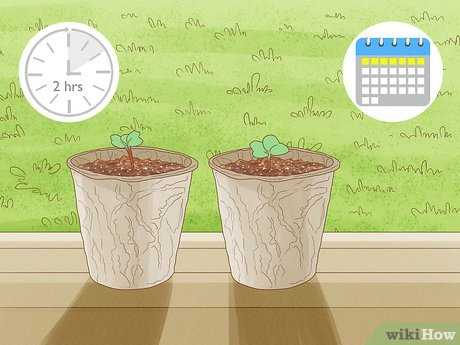
Dichondra leaves can be used in various DIY craft projects. They can be pressed and used in scrapbooking, used as a natural accent in floral arrangements, or even used to make unique jewelry pieces. Let your creativity guide you!
6. Composting
If you have excess dichondra leaves that you don’t plan on using, you can add them to your compost pile. They will break down over time and contribute valuable organic matter to your compost.
Whether you choose to consume dichondra fresh, dry it for tea, use it as ground cover, or get creative with DIY crafts, this versatile plant offers many possibilities. Harvesting and utilizing dichondra is a great way to make the most of this beautiful and useful plant in your garden.
Tips for Overwintering
Overwintering dichondra can be challenging, especially in colder climates. However, with proper care and preparation, you can increase your chances of successfully overwintering this delicate plant.
1. Bring Indoors
If you live in a region with harsh winters, consider bringing your dichondra plants indoors before the first frost. Choose a location with bright, indirect light, such as a sunny window or a greenhouse. Keep the plants away from drafts and maintain a temperature between 60-70°F (15-21°C).
2. Reduce Watering
During the winter months, dichondra enters a period of dormancy. This means that the plant’s water requirements reduce significantly. Reduce watering frequency and only water when the top inch of soil feels dry. Overwatering can lead to root rot and other problems.
3. Provide Proper Humidity
Dichondra prefers high humidity levels to thrive. To mimic these conditions indoors, place a tray with water near the plants or use a humidifier. Mist the plants occasionally to increase humidity levels.
4. Maintain Air Circulation
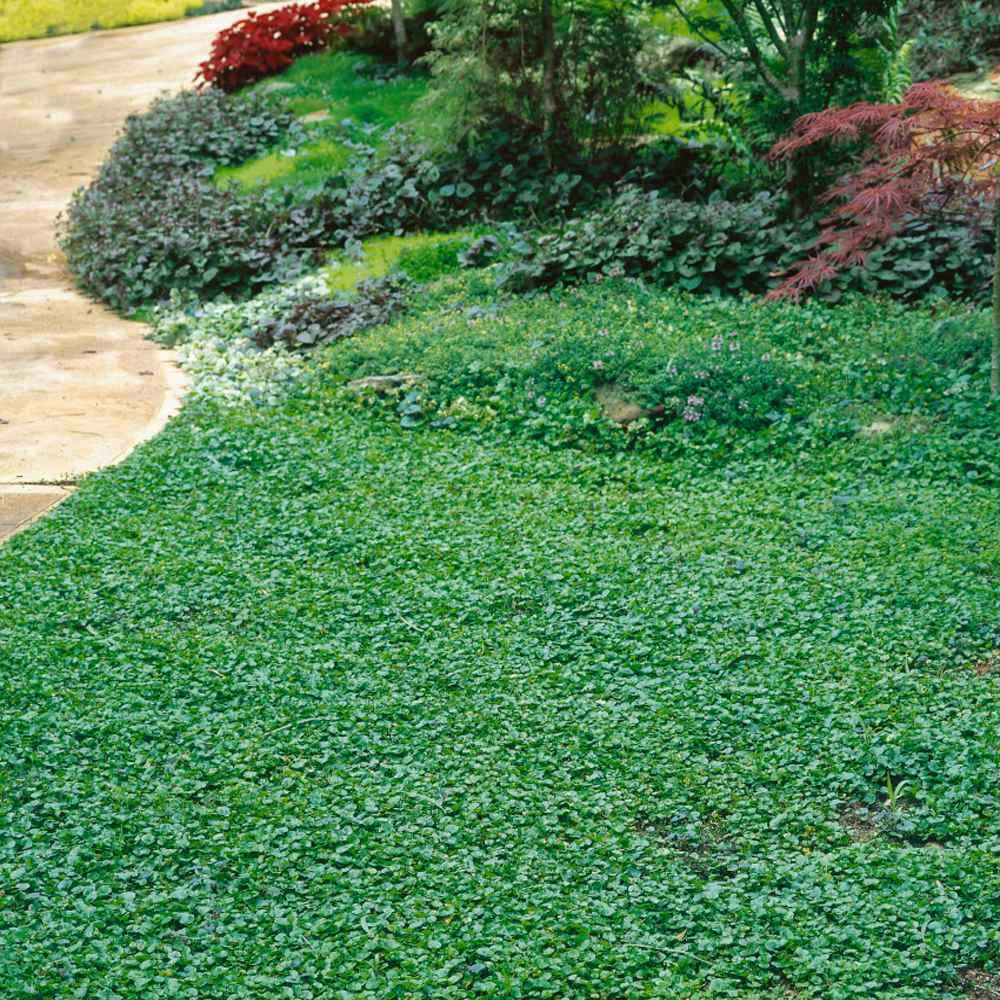
Adequate air circulation is essential to prevent the growth of fungal diseases. Make sure the plants have enough space between them and avoid overcrowding. Open windows periodically to allow fresh air to circulate.
5. Monitor for Pests
Pest infestations can still occur indoors during winter. Regularly check your dichondra plants for common pests such as aphids or spider mites. If you notice any signs of infestation, treat the plants immediately with organic pest control methods.
6. Prune and Fertilize
While dichondra plants are dormant, you can prune them back to encourage healthy growth in the spring. Remove any yellow or damaged leaves and maintain a compact shape. Avoid fertilizing during the winter months, as the plant’s growth is slowed down.
By following these tips, you can increase the chances of successfully overwintering your dichondra plants and enjoy their beauty year after year.
Questions and Answers:
How long does it take for dichondra seeds to germinate?
It usually takes about 7-14 days for dichondra seeds to germinate.
Can dichondra seeds be sown directly in the garden?
Yes, dichondra seeds can be sown directly in the garden. However, they may have a higher germination rate if started indoors and then transplanted outdoors.
What is the ideal temperature for germinating dichondra seeds?
The ideal temperature for germinating dichondra seeds is around 60-70°F (15-21°C).
How often should dichondra seeds be watered?
Dichondra seeds should be watered regularly to keep the soil moist but not waterlogged. It is best to water them whenever the top inch of soil feels dry.
Can dichondra be grown in containers?
Yes, dichondra can be grown in containers. It is a great choice for hanging baskets, window boxes, or other containers where it can cascade over the sides.
What type of soil is best for growing dichondra from seed?
Well-draining soil with a pH level between 5.5 and 6.5 is best for growing dichondra from seed.
Can dichondra be grown in full sun?
Dichondra is a shade-loving plant, so it prefers partial shade to full shade. However, it can tolerate some morning sun or filtered sunlight.







